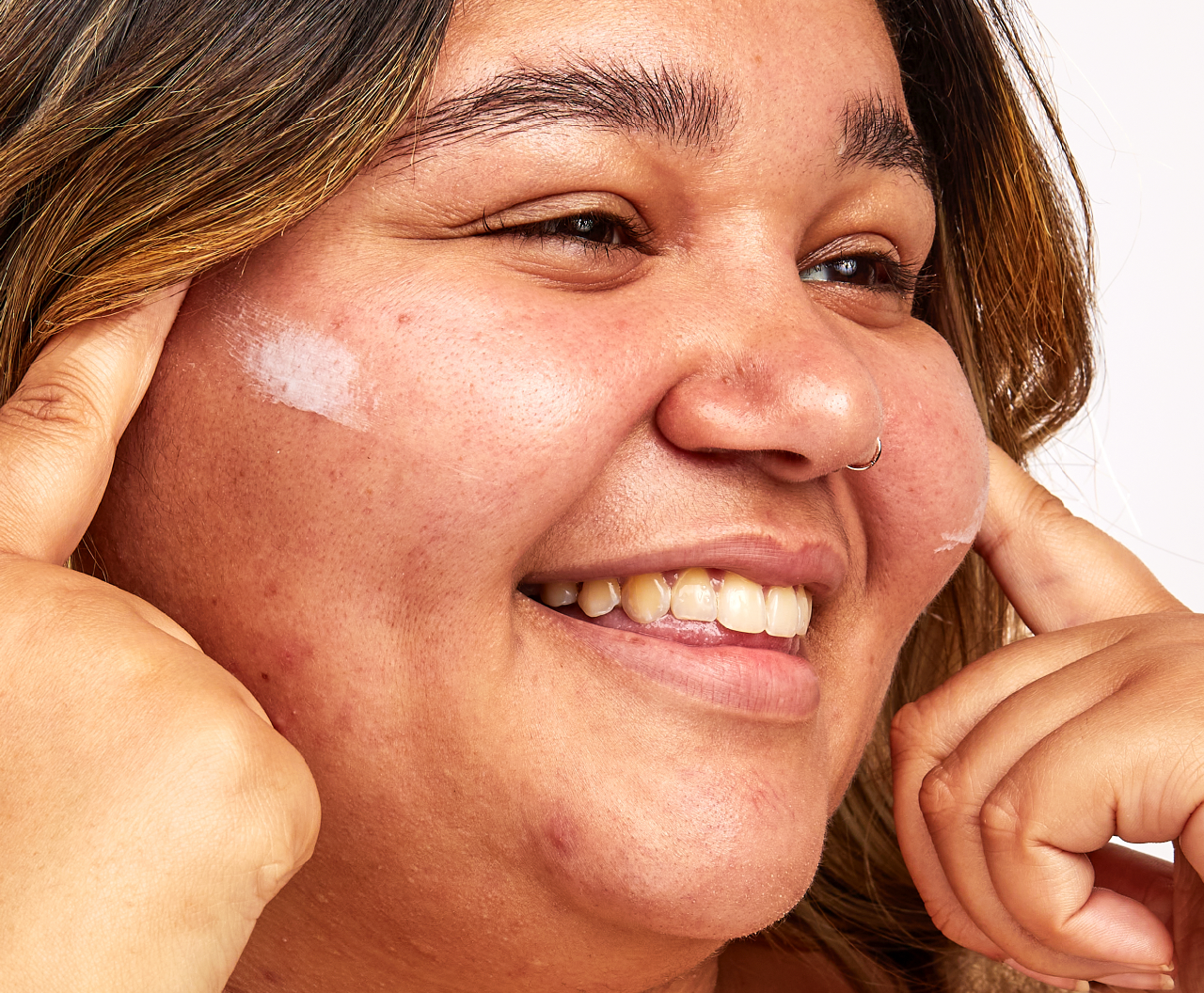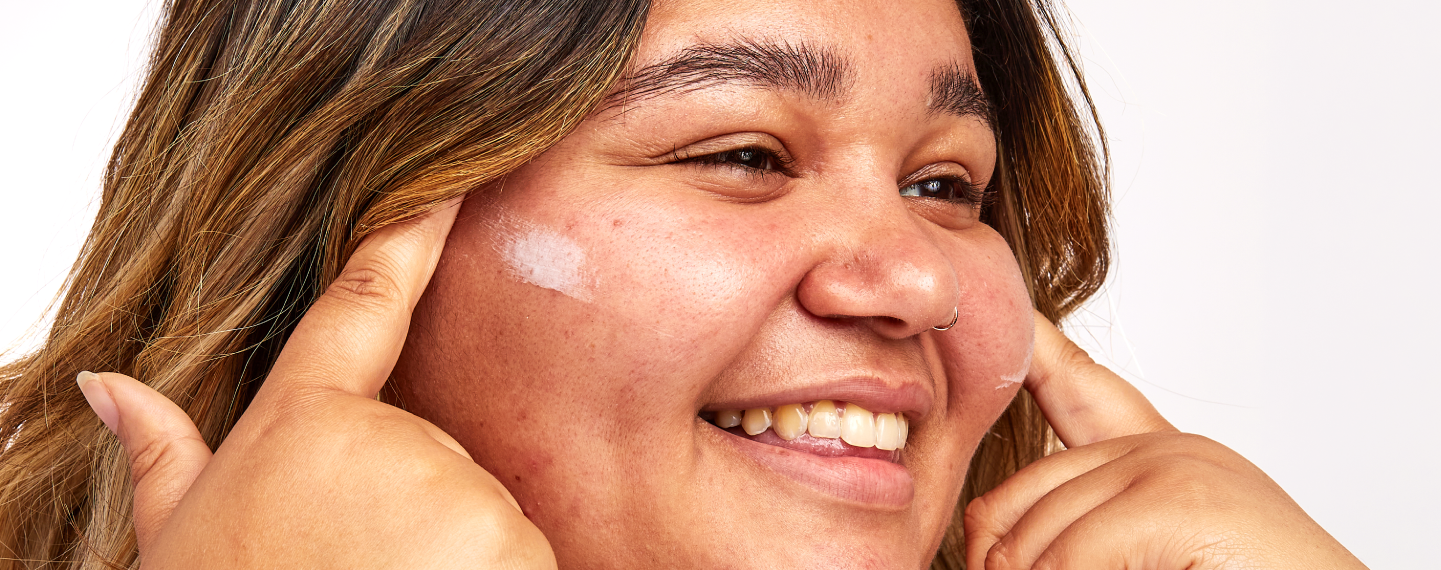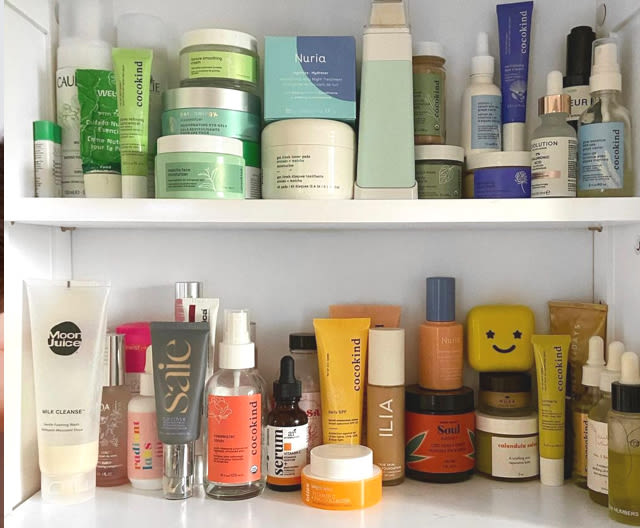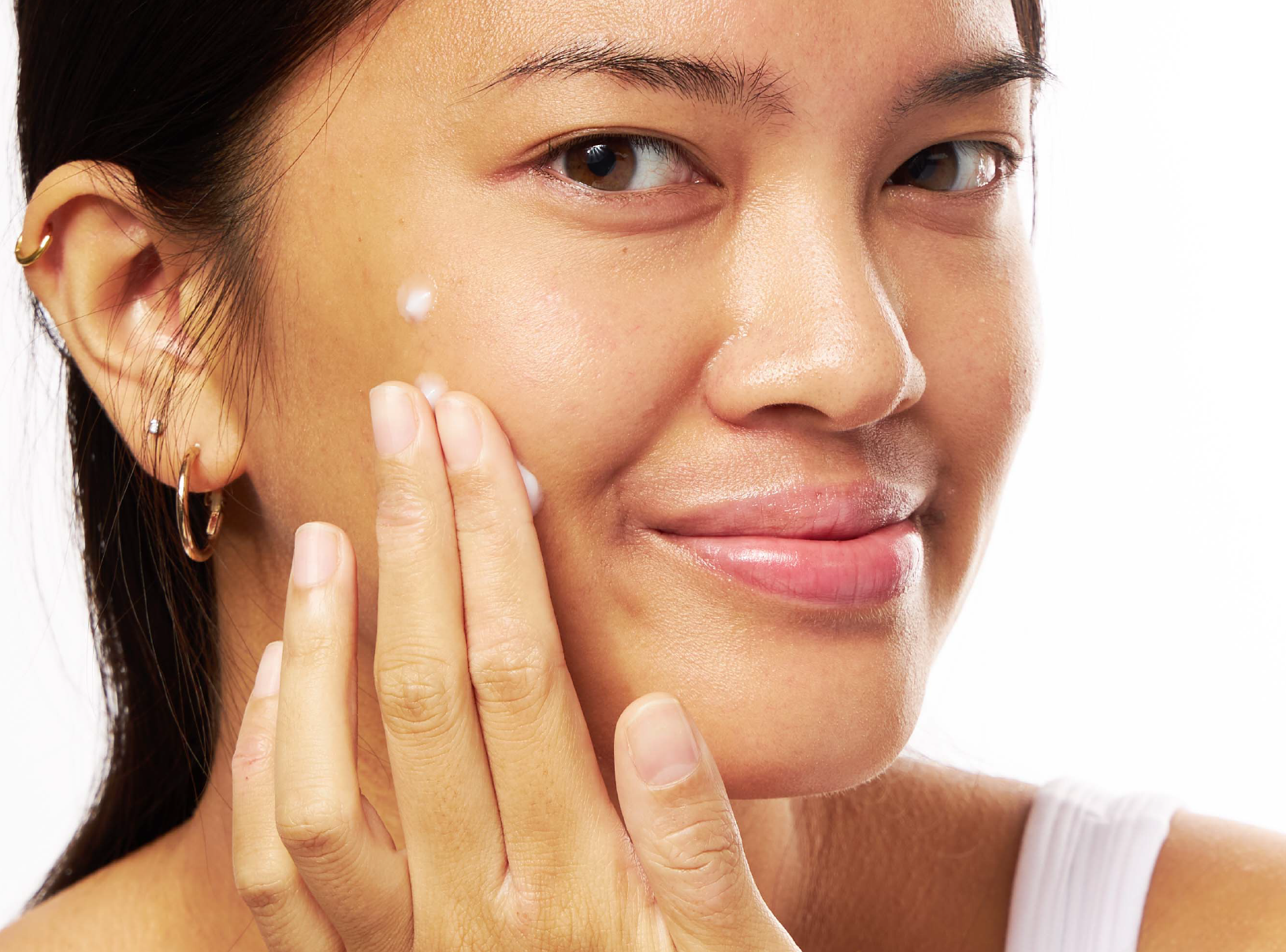Education
Tips for blemish prone skin


SHARE
Education
Tips for blemish prone skin
Medically reviewed by Kristin Hall, FNP
Written by Apostrophe Team
Last updated 4/1/2024
Blemish prone skin can be a real bummer. Whether you have naturally oily skin, sensitive skin or just tend to see frequent acne blemishes week after week with no explanation, it's common to feel exhausted and even feel despair about the skin you're in.
But the skin you're in is beautiful, it's great — it's you. It's the damn blemishes that are the problem.
There are many ways to prevent future breakouts for acne-prone skin. But before you can treat blemishes, you need to understand why you have blemish-prone skin in the first place.
What Causes Blemishes?
Blemishes are a euphemism for breakouts, pimples, and what we know as acne — those little red, white, and dark spots that crop up on your face like welts, often at the worst possible times.
There are two parts to the question of where blemishes come from: the process by which they happen, and the underlying causes that make that process happen. Let’s start with the process.
Blemishes happen when the normal process of discarding dead cells from within your pores happens incorrectly. This can mean many things.
It can mean that dry, dead skin cells have become lodged in your pore. It can mean that your body responded to the backed up dead skin debris by releasing more sebum or oil into your pore to try and lubricate them so that the debris can be pushed out. It can also mean that the bacteria within your pores have grown out of control.
Any one of these three factors can easily become a catalyst for the others — dead skin can cause oil buildup, and a buildup of oil and dead skin cells makes for a breeding ground and well-stocked food source for the Propionibacterium acnes, or P. acnes bacteria (now called C. acnes bacteria or Cutibacterium acnes), which in turn replicate.
Blemishes, or acne, come in several forms, and these forms create a map of severity.
Acne severity is determined by how bad your blemishes are — whether the material inside is liquid pus or solid mass, and whether your blemishes are inflamed or have developed fungal infection.
The different forms that your acne can take may be called blackheads or whiteheads, papules, pustules, and nodes or nodules, and your acne may be fungal or cystic acne.
Why You Have Blemish Prone Skin
What causes this to happen, however, is less clear to the medical community.
That’s in part because your pores can go out of balance for any number of reasons. You might be prone to blemishes due to poor hydration, stress, or hormone imbalances caused by androgens.
These hormones are typically associated with adolescence and the changes that come from puberty.
And if you know anything about being a teenager, you know that, for some people, androgens can drastically increase things like sebum production.
Oil (known as sebum), is a normal product of your skin, and it benefits you greatly by helping you wick away dead cells and dirt.
But if your skin is too dry due to dehydration, or your oil production or hormones are out of balance, androgens can be the tipping point between blemish prone skin and blemished skin.
Mechanisms for acne vary widely, and everything from birth control medications and dietary choices, to how often you’re in the sun, can affect your acne risks.
So what is the best way to treat blemishes? Well, that depends on you and your skin type.
How to Treat Blemishes
Treating blemish prone skin is a complicated endeavor. There are some important tips we suggest you consider as you try to get the blemish problem under control.
Remember that your skin is unique and not like everyone else’s
Your skin is different from everyone else’s around you. Whether that be a best friend with the same taste in cosmetics, a brother, sister sister or your parents — everyone’s skin is different.
Because of this, the things that work for other people — like benzoyl peroxide or retinoids — may or may not work for you.
Routines have to be personally tailored for the best effects, and for people prone to blemishes, that may mean getting really granular about your skincare routine and using more than one treatment.
You might be prone to blemishes because your skin is too oily, which would make drying, astringent products like witch-hazel good for you.
Your skin might also be too dry, in which case astringents might make things worse.
Make sure you’re using your medications correctly
Pills, topicals, and other products can do a variety of beneficial things for your skin when used correctly, but that means following the instructions to the letter.
It means finishing every last pill in a prescription, and it means using topicals as directed, heeding warnings and not skipping days.
It also means not going too hard on scrubbers and other physical astringents, which can injure your skin if used in excess.
Get help from a healthcare professional
Acne may not be a life-threatening condition, but that doesn’t mean a healthcare professional can’t help you take it on more effectively.
The International Journal of Women’s Dermatology explained in 2018 that acne treatment options tend to vary widely, and that treatment of acne “should be tailored specifically for each individual woman.”
That couldn’t be more true, whether you have severe acne or just the occasional blemish.
Seeking out help is the right way to get questions answered, and the best way to avoid wasting time, money and discomfort on treatments that might not even be the right solution for your individual blemish problems. Apostrophe is an online platform that helps you get connected to an expert derm team who will craft a customized treatment plan for your acne.
Be open to and explore all treatment options
So benzoyl peroxide didn’t work for you? So pore strips traumatized you at a young age? Doesn’t matter.
You need to be willing to explore new treatments. Persistent acne is a pain, but a combination of preventative and responsive acne treatment options is the best arsenal you can give yourself in the fight against blemishes.
That may mean using a Vitamin C serum to help your skin stay healthier by fighting free radicals.
It may mean using topical retinoids, which can treat serious acne issues and increase your skin’s healthy glow.
Certain retinoids can even boost your skin’s collagen production — ask a healthcare professional if you’re curious about double-duty acne and aging benefits.
If your particular acne problem is due to seriously aggressive bacteria, a healthcare professional might suggest that you consider antibiotics, including prescription options can help you get the root cause of your pimples under control.
So, What’s the Deal with Blemish Prone Skin
For people with blemish prone skin, there are many ways to treat and control the problem. Healthcare professionals might suggest any number of treatments, from dietary supplements to a facial cleanser, to products like salicylic acid and glycolic or hydroxy acids.
All of these products present their own benefit potentials and risks. But rather than read a hundred product details and scour the ingredient list of everything on the skincare shelf, the smartest thing you can do is talk to a healthcare professional.
Getting control of stubborn blemish-prone skin is definitely a chore, but reducing the appearance of blemishes on your face isn't impossible with the right help.
References:
Yoham AL, Casadesus D. Tretinoin. [Updated 2020 Dec 5]. In: StatPearls [Internet]. Treasure Island (FL): StatPearls Publishing; 2021 Jan-. Available from: https://www.ncbi.nlm.nih.gov/books/NBK557478/. 10 things to try When acne won't clear. (n.d.). Retrieved February 26, 2021, from https://www.aad.org/public/diseases/acne/DIY/wont-clear.
Adult acne. American Academy of Dermatology. (n.d.). Retrieved November 10, 2021, from https://www.aad.org/public/diseases/acne/really-acne/adult-acne
Tan, A. U., Schlosser, B. J., & Paller, A. S. (2017). A review of diagnosis and treatment of acne in adult female patients. International journal of women's dermatology, 4(2), 56–71. https://doi.org/10.1016/j.ijwd.2017.10.006. Retrieved from https://www.ncbi.nlm.nih.gov/pmc/articles/PMC5986265/
Rodan, K., Fields, K., Majewski, G., & Falla, T. (2016). Skincare Bootcamp: The Evolving Role of Skincare. Plastic and reconstructive surgery. Global open, 4(12 Suppl Anatomy and Safety in Cosmetic Medicine: Cosmetic Bootcamp), e1152. https://doi.org/10.1097/GOX.0000000000001152. Retrieved from https://www.ncbi.nlm.nih.gov/pmc/articles/PMC5172479/
Acne. (n.d.). Retrieved January 28, 2021, from https://www.hopkinsmedicine.org/health/conditions-and-diseases/acne
Picardo, M., Ottaviani, M., Camera, E., & Mastrofrancesco, A. (2009). Sebaceous gland lipids. Dermato-endocrinology, 1(2), 68–71. https://doi.org/10.4161/derm.1.2.8472. Retrieved from https://www.ncbi.nlm.nih.gov/pmc/articles/PMC2835893/
Fox, L., Csongradi, C., Aucamp, M., du Plessis, J., & Gerber, M. (2016). Treatment Modalities for Acne. Molecules (Basel, Switzerland), 21(8), 1063. https://www.ncbi.nlm.nih.gov/pmc/articles/PMC6273829/
Acne: Treatment, types, causes & prevention. (n.d.). Retrieved February 20, 2021, from https://my.clevelandclinic.org/health/diseases/12233-acne
Like what you just read? Sign up for our email list to get the scoop on skincare science delivered straight to your inbox.

Education
What is milia?
What is milia? Today, we’re jumping into one type of bump that you may have heard about most commonly in infants — milia.
Read More
Education
Best moisturizer for acne-prone skin
If you have combination acne-prone skin, figuring out which moisturizer is best for your skin might be tough. In this guide, we break down the best moisturizer for combination, acne-prone skin.
Read More
Education
How to build a face care routine
As you get into skincare, it might seem overwhelming, especially trying to figure out the order you're supposed to apply products in. Below, we detail how to build a face care routine for your skin!
Read More
